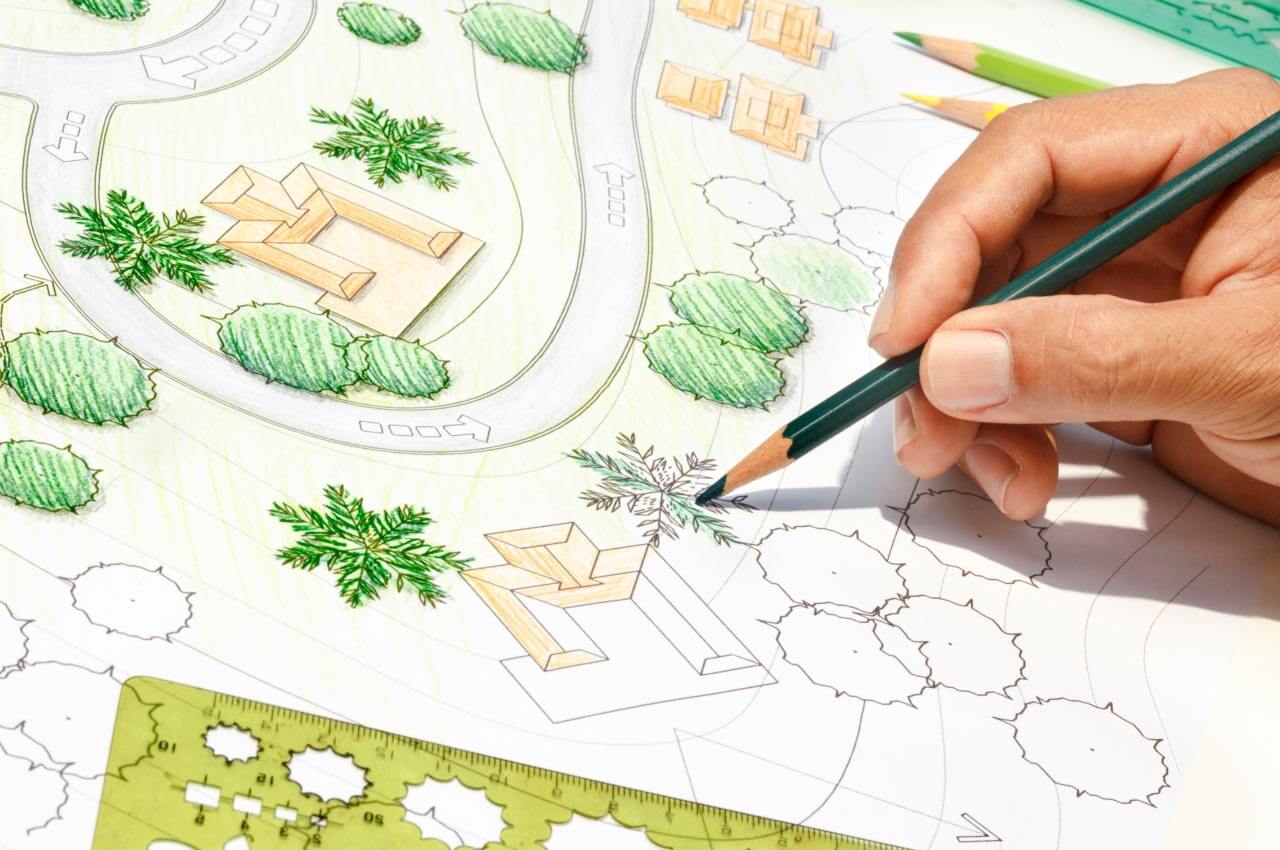
Creating a landscape is similar to creating a work of art. However, understanding the key landscape design elements involved with home landscaping is the first step toward creating a unified, harmonious outdoor space.
Do you want your neighbors to be envious of your own garden when they pass by? Make your home stand out with these four landscape design elements.
Before you begin, you must thoroughly research and comprehend your property, including the plant material, plant forms, and hardscape materials you will be using.
Knowing the size of the space will help you determine which ornamental grassesOrnamental grasses are grasses grown for their decorative qualities rather than for traditional agri... will work in that space when they mature, how many plants you'll need, and how many bags of soil and mulchMulch is a layer of organic or inorganic material applied to the soil surface in gardens and landsca... you'll need.
Design elements have aided in the transition from rows of flowers in a flowerbed. to a beautiful and artistic landscape design with a symmetrical balance to the focal point of your home.
Here are the most critical landscape design elements to keep in mind:
Horizontal or vertical lines direct the attention throughout your landscape. Straight lines tend to also control movement throughout your property.
Upright, horizontal, round, or conical shapes complement the landscape theme.
Different textures can be added to a surrounding landscape by plants or structures. Fine textures recede and make the space appear larger, whereas coarse textures make the space appear more intimate.
Color affects the moods of those interacting with the landscape form. For example, warm colors are bright and make the space appear larger, whereas cool colors appear further away.
Asymmetrical balance is a design element in which one side mirrors the other, and more straight lines are used, whereas informal balance is asymmetrical in which more curved lines and a different layout are used on each side of your design.
Repetition can be useful in unifying plant materials or hardscape schemes, but it must be used with caution so that the repeating elements are not overused. Consider mixing different lines, shapes, and colors within your design to create a landscape with visual interest.
Less is more, and when combining different or the same elements is the essence of a good design.
Create density in your landscape design by grouping odd numbers of the same plant types.
Create the lines of your design in your yard with a garden hoseA garden hose is a flexible tube used to convey water from a faucet to various areas of a landscape,... while you're still in the planning phase. This will allow you to see at a scale how big you want to make your designs and the shape you want to create, as well as where you want to place your flowerbed edging.
Starting with your front door windows as focal points is a good place to start. Create an inviting layout for your landscape that leads to your lovely home. Finally, remember to consider the water requirements of each of your plant choices and group items with similar water requirements together.
To avoid covering smaller coarse-textured plants and blocking their sunlight, place taller growing shrubs and trees in the back of your design, and try using groundcoversGroundcovers are low-growing plants that spread across the soil surface, creating a dense mat that h... to fill space and create mass. Groundcovers add color and texture to any design.
To set up a free estimate for your next home improvement project and to learn how our landscaping experts can help you build the home of your dreams, you may email us at info@westhillsmasonry.com or contact us at 714-519-5009 at West Hills Masonry today!
 Carlos Gonzales
Carlos GonzalesLocations We Serve
Schedule A Consultation